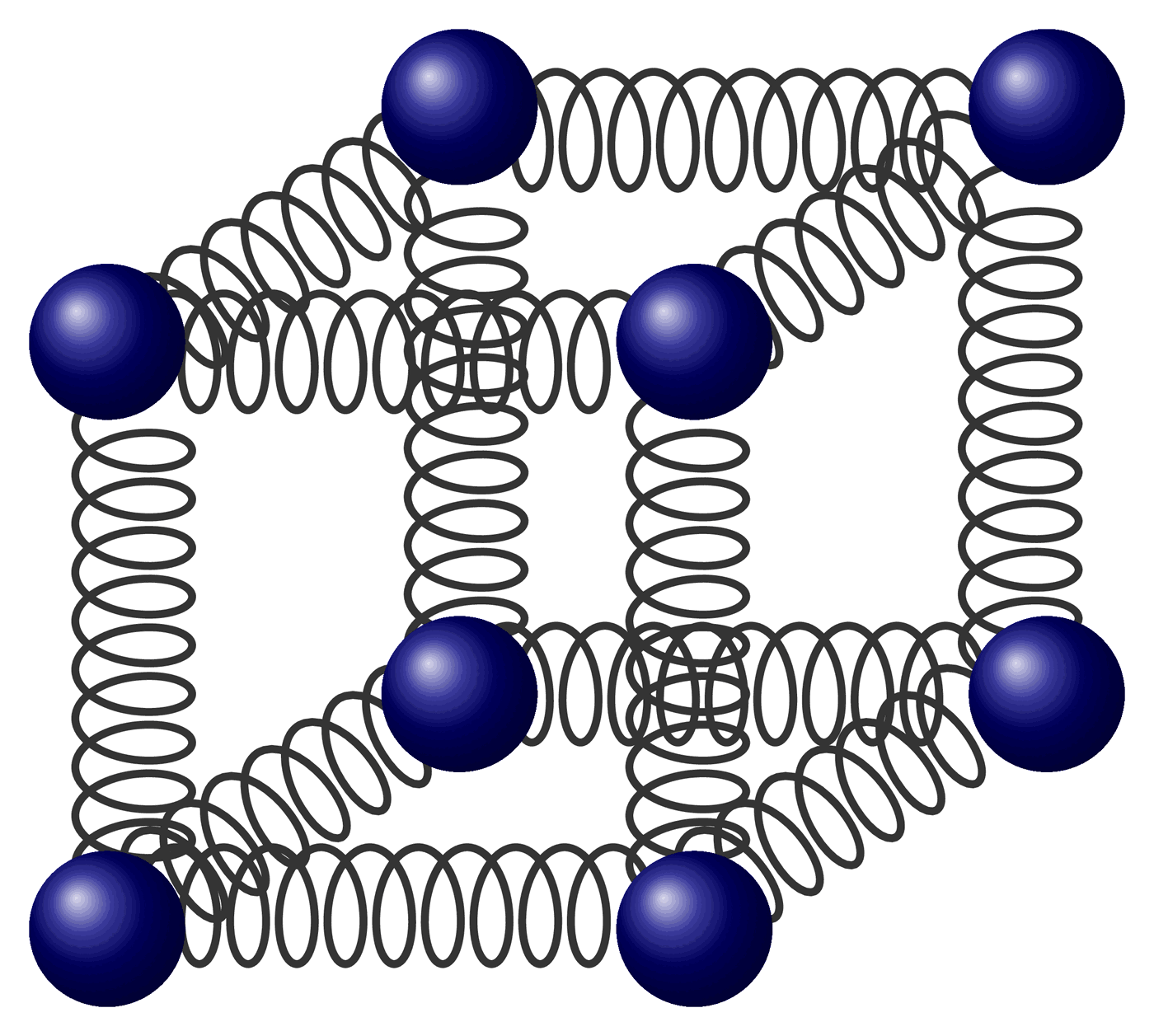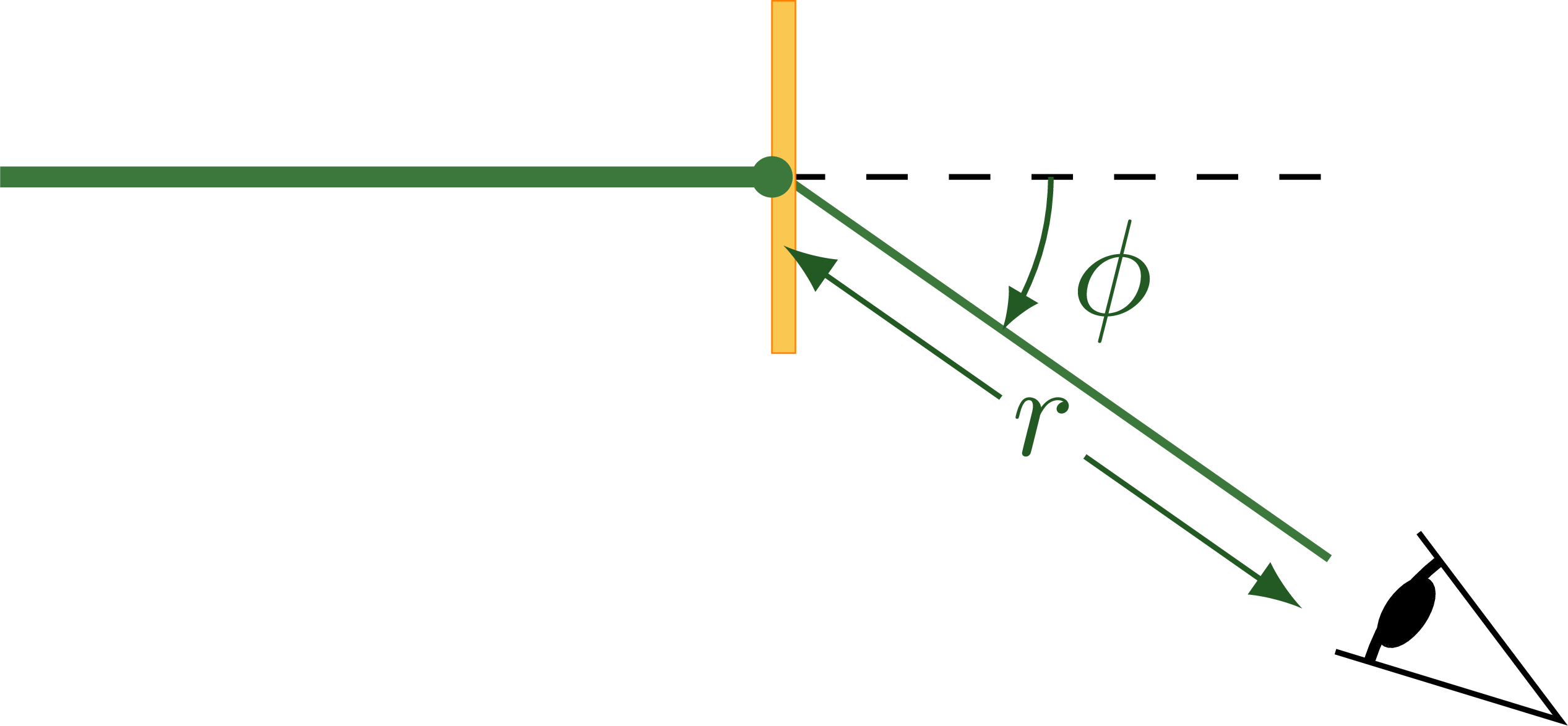The Thomson and the Ruterford model of the atom.
Also have a look at the Bohr model of the atom, the model for conducting metals, or Rutherford’s scattering. It was used in a presentation on Rutherford’s discovery of the nucleus.
Thompson’s plum pudding model of the atom (1904) with a positively charged “pudding”, which fills the atom’s volume, and negatively charged “plums” (corpuscles/electrons):
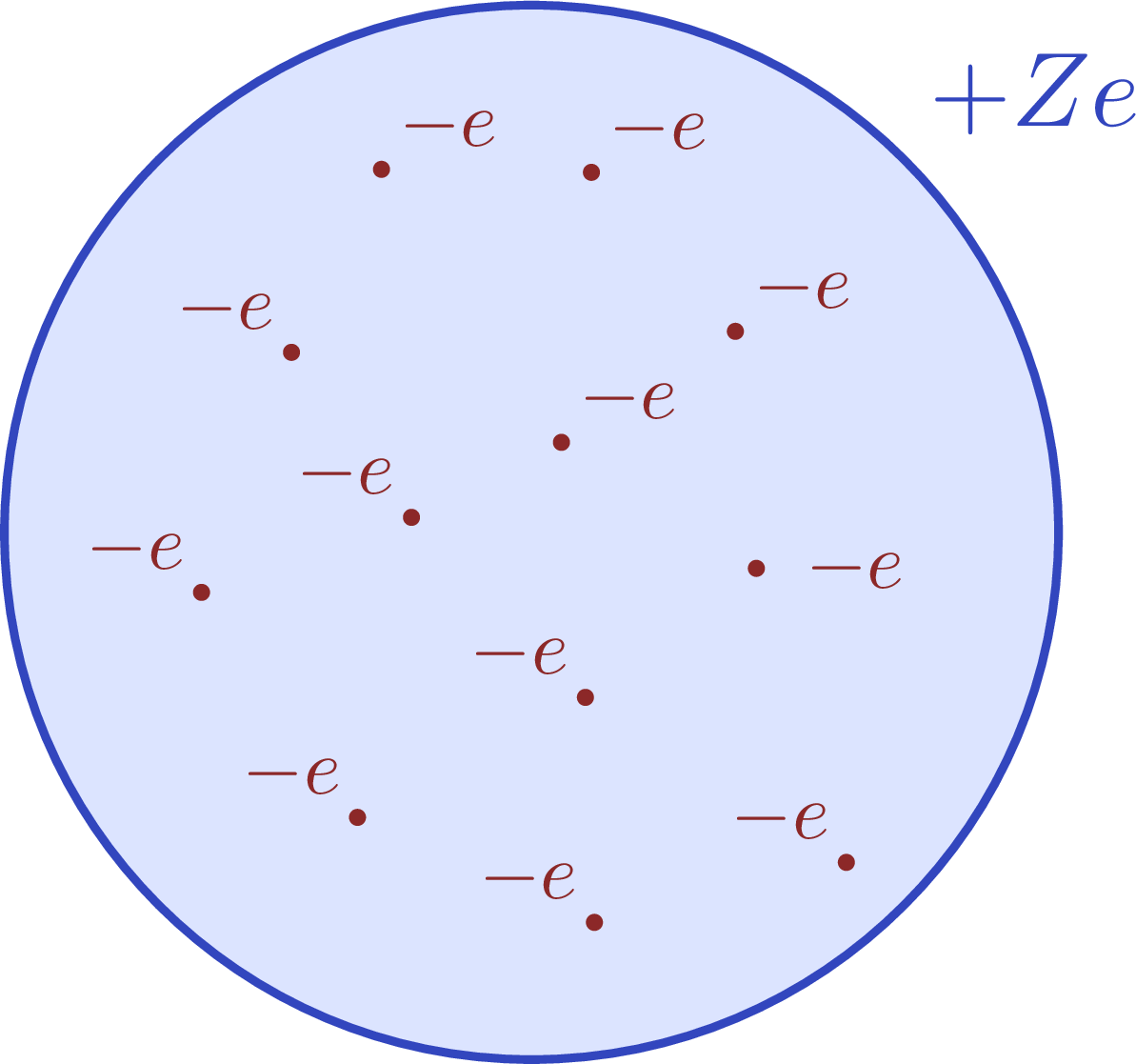
Rutherford’s nuclear atom model (1911) with a central charge and a negatively charged “satellites” (electrons):
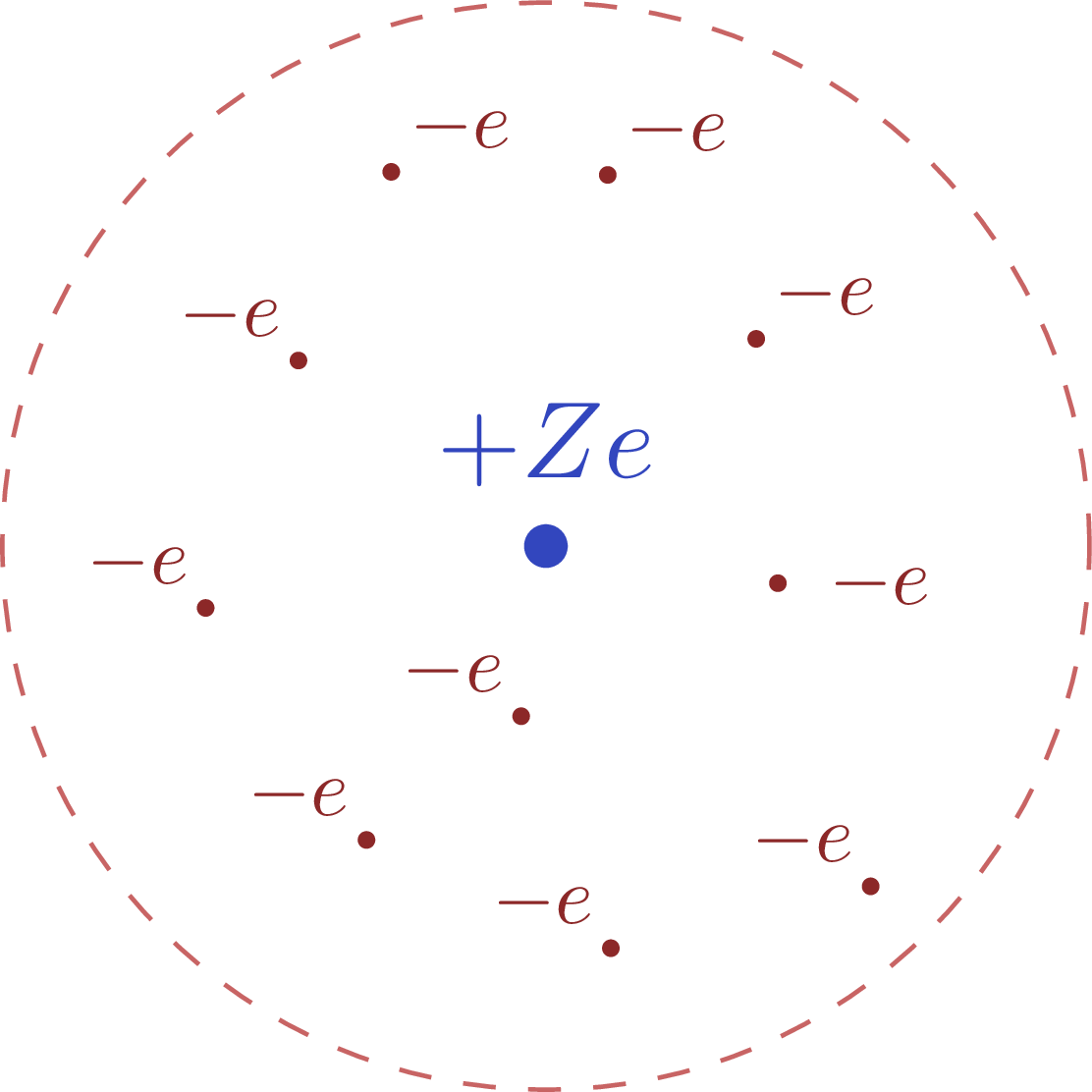
Rutherford’s atom model with a central charge and a negatively charge -Ze uniformly filling the atom’s volume as an approximation (see his historic 1911 paper):
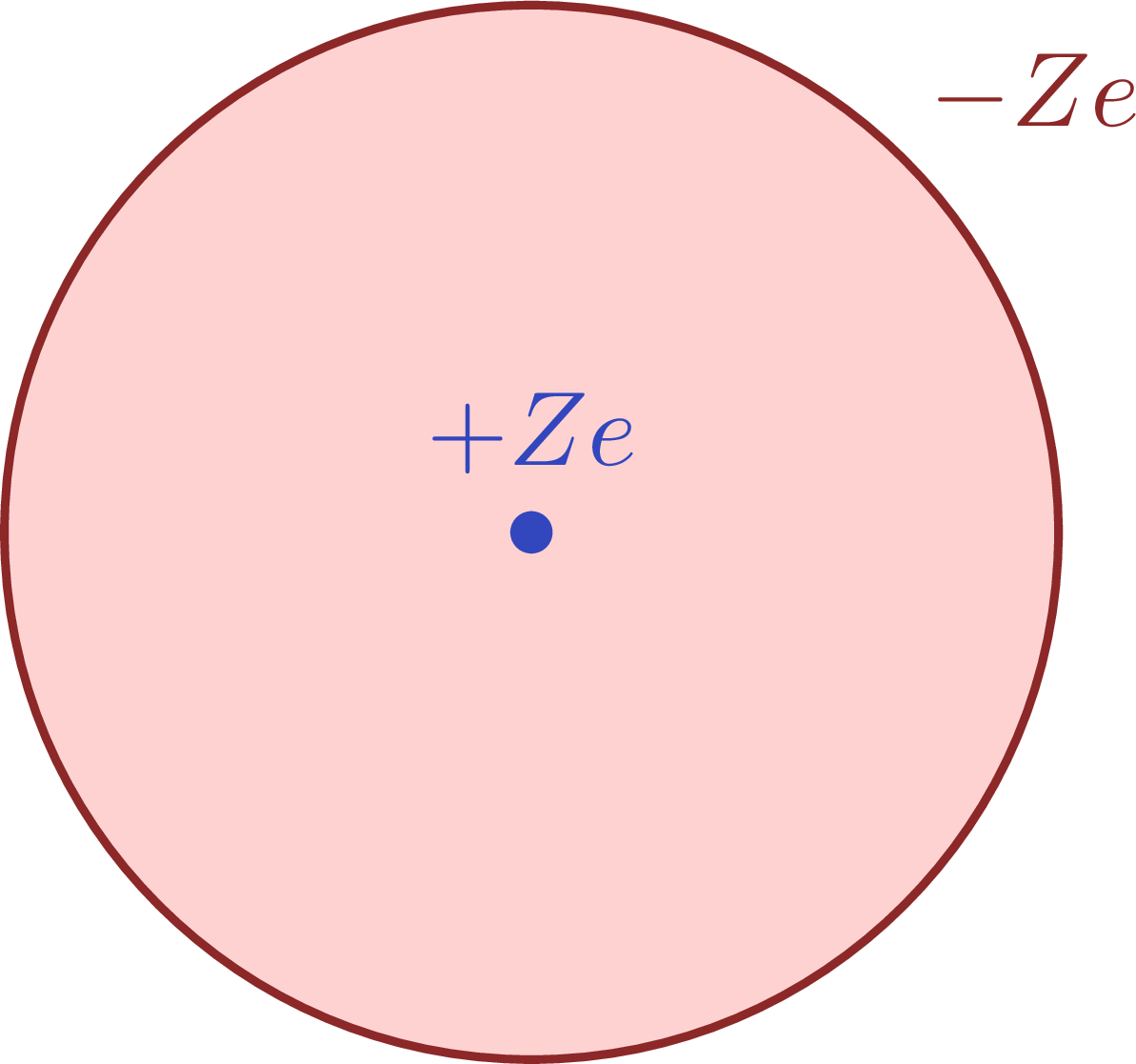
Edit and compile if you like:
% Author: Izaak Neutelings (July, 2017)
\documentclass[border=3pt,tikz]{standalone}
\usepackage{tikz}
% colors
\definecolor{mylightred}{RGB}{255,210,210}
\definecolor{myred}{RGB}{200,100,100}
\definecolor{mydarkred}{RGB}{140,40,40}
\definecolor{mylightblue}{RGB}{220,228,255}
\definecolor{myblue}{RGB}{183,191,229}
\definecolor{mydarkblue}{RGB}{50,70,190}
\begin{document}
% RUTHERFORD MODEL - atom model with central charge
\begin{tikzpicture}[scale=1]
\coordinate (O) at (0,0);
\draw[mylightred,fill] (O) circle (50pt);
\draw[mydarkred,thick] (O) circle (50pt) node[above right=34pt] {$-Ze$};
\fill[radius=2.0pt,mydarkblue] (O) circle node[above=2pt] {$+Ze$};
\end{tikzpicture}
% RUTHERFORD MODEL - atom model with central charge and corpuscles
\begin{tikzpicture}[scale=1]
\coordinate (O) at (0,0);
\draw[myred,dashed] (O) circle (50pt);
\fill[radius=2.0pt,mydarkblue] (O) circle node[above=2pt] {$+Ze$};
\fill[radius=0.8pt,mydarkred]
( 0.20, 1.20) circle node[above right=-1pt,scale=0.75] {$-e$}
( 0.68, 0.67) circle node[above right=-1pt,scale=0.75] {$-e$}
( 1.05,-1.10) circle node[above left =-1pt,scale=0.75] {$-e$}
( 0.75,-0.12) circle node[ right= 2pt,scale=0.75] {$-e$}
( 0.21,-1.30) circle node[above left =-1pt,scale=0.75] {$-e$}
(-0.80, 0.60) circle node[above left =-1pt,scale=0.75] {$-e$}
(-0.50, 1.21) circle node[above right=-1pt,scale=0.75] {$-e$}
(-0.08,-0.55) circle node[above left =-1pt,scale=0.75] {$-e$}
(-0.58,-0.95) circle node[above left =-1pt,scale=0.75] {$-e$}
(-1.10,-0.20) circle node[above left =-1pt,scale=0.75] {$-e$};
\end{tikzpicture}
% THOMSON MODEL - atom model with corpuscles (electrons) in uniformly, positively charged sphere
\begin{tikzpicture}[scale=1]
\coordinate (O) at (0,0);
\draw[mylightblue,fill] (O) circle (50pt);
\draw[mydarkblue,thick] (O) circle (50pt) node[above right=34pt] {$+Ze$};
\fill[radius=0.8pt,mydarkred]
( 0.20, 1.20) circle node[above right=-1pt,scale=0.75] {$-e$}
( 0.10, 0.30) circle node[above right=-1pt,scale=0.75] {$-e$}
( 0.68, 0.67) circle node[above right=-1pt,scale=0.75] {$-e$}
( 1.05,-1.10) circle node[above left =-1pt,scale=0.75] {$-e$}
( 0.75,-0.12) circle node[ right= 2pt,scale=0.75] {$-e$}
( 0.21,-1.30) circle node[above left =-1pt,scale=0.75] {$-e$}
( 0.18,-0.55) circle node[above left =-1pt,scale=0.75] {$-e$}
(-0.80, 0.60) circle node[above left =-1pt,scale=0.75] {$-e$}
(-0.50, 1.21) circle node[above right=-1pt,scale=0.75] {$-e$}
(-0.40, 0.05) circle node[above left =-1pt,scale=0.75] {$-e$}
(-0.58,-0.95) circle node[above left =-1pt,scale=0.75] {$-e$}
(-1.10,-0.20) circle node[above left =-1pt,scale=0.75] {$-e$};
\end{tikzpicture}
\end{document}
Click to download: atom_model.tex • atom_model.pdf
Open in Overleaf: atom_model.tex




